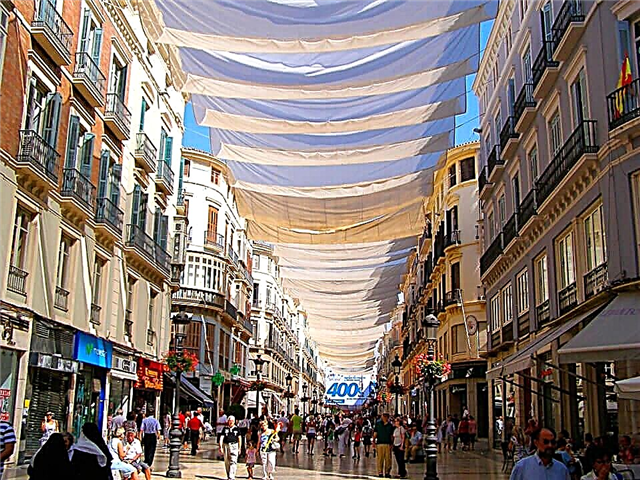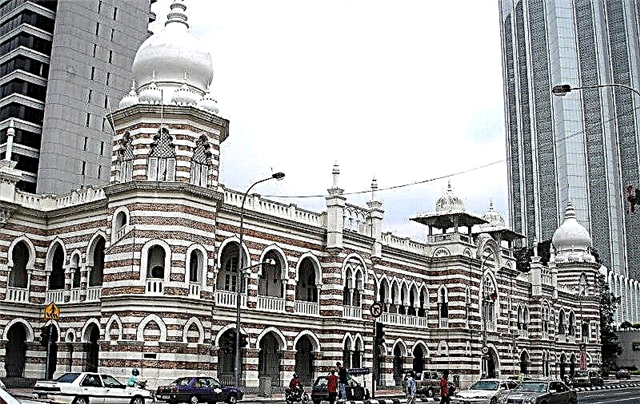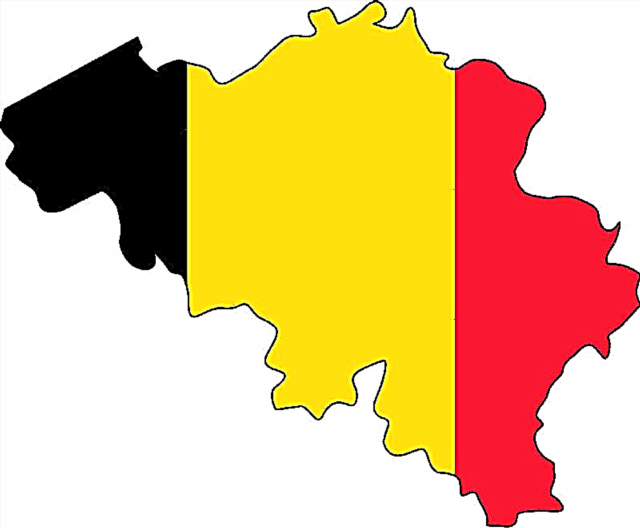When the roads brought you to Rome, you touched the cultural heritage of the capital, went shopping and saw Rome at night. It's time to think about how to diversify your vacation. Tired of the bustle of the city and the tourist squads around, I really want to visit new, more secluded, but no less interesting places. Choose where to go from Rome for 1 day on your own, because not far from the center of tourism there are unique historical places and corners of nature. The dead city, the majestic royal palace, the azure coast of the sea, underground terraces, diving, excavations of the ancient city, medieval fortresses and castles are just some of the interesting locations near Rome.
Bracciano

This amazing Italian corner is located only 30 km away and, like many provincial towns of the heiress of the Roman Empire, is located right on the hills. Although the settlement cannot be called large and it does not at all stand out for its landscapes from the general mass, there is definitely something in it. There are fountains here and there, and stone houses have been buried in the green of olive groves and vineyards for centuries.
What is there that can make you leave respectable Rome? It turns out that Bracciano is famous for two attractions at once: a huge lake and a medieval castle. And the surprises are just beginning! Remember the ancient Etruscans who once inhabited the Apennine Peninsula? It turns out that even today you can taste wines, the recipe of which was invented by the best winemakers of that distant time! Not far from the lake there is an old winery, which is famous throughout the world for the divine taste of this drink.

As for the reservoir itself, then, according to historians, it is located exactly where an active volcano was once located. Well, the indigenous people will not forget to mention one of their favorite legends, according to which, at the bottom of the lake, the remains of the ancient city are still preserved. Agree, such "tricks" only inflame the interest of tourists and divers to this lake. And I would really like to spend a few hours on a well-groomed beach, peering into the picturesque landscapes of the lake!
An even more famous landmark is the ancient Odescalchi castle. It is to him that crowds of romantics and lovers of architecture of the Middle Ages come. By the way, the castle is very popular with all sorts of celebrities who choose this castle for their wedding ceremonies.

The history of the castle begins in the X century. It was then that the first watchtower was built on the site of this architectural masterpiece. For many centuries, the castle was the family abode of many families, until in the 15th century it became the main house of the Orsini family. It is with this surname that the flourishing of the town is associated, and the construction of the castle, which today has become one of the main adornments of Italy. By the way, now the medieval masterpiece is privately owned by the Odescalchi family, although since the 20th century it has been open to everyone. Enchanting wedding ceremonies, negotiations at the highest political level and even filming take place here.
Getting to Bracciano is very easy. Every 30 minutes, a train departs from Ostiense Metropolitan Station, which will take you to this amazing corner.
Viterbo

Another exciting one-day tour will be able to present the picturesque Viterbo, which is located 100 km from the capital. The medieval appearance of the settlement, intriguing history and a decent range of attractions will do the trick, and you will fall in love with this piece of the Apennine Peninsula. You can get to the village by train that departs from Ostiense train station. The journey will take about 2 hours.

As soon as you are in Viterbo, appreciate the excellent condition in which all the city's attractions have been preserved. Let's start with Villa Lante. In addition to a couple of grandiose villas, owned by cardinals, it is here that there is a grandiose Italian garden in terms of beauty and design. Perfectly trimmed shrubs that are located at every turn, bizarre "green" labyrinths in which you can get lost, as well as the murmur of water in some of the most magnificent fountains in Italy! Each fountain is a separate piece of work by brilliant architects.
It is worth taking time for the unique Lake Vico, which is part of the reserve. This meeting will not only give another charge of positive emotions, but will also allow you to plunge into clear water, if the weather permits. By the way, if your heart becomes a prisoner of this extraordinarily beautiful corner, you can always prolong your acquaintance by staying in one of the hotel rooms located right on the shore.
Castel Gandolfo

One of the most exciting trips can be a visit to the small town of Castel Gandolfo. It is famous for the fact that it is on the shores of the local lake that the summer residence of one of the most influential people on the planet, the Pope, is located. The history of the picturesque region is rather prosaic. Until the 16th century, the town was influenced first by the di Tuscolo family and later by the Gandolfo surname. According to the laws of that time, each estate was obliged to pay tribute to the Holy See. And when the owner of the settlement could not pay the due, the then Pope Clement VII contributed to the transfer of the estate to the ownership of the Vatican. Later, where the castle was located, the summer residence of the pontiff was erected.
It is interesting that the pontiff Urban VII, during whose reign the construction was taking place, was directly involved in decorating the residence, since he was famous for his good taste and versed in architecture. The popularity of the residence is growing every year, and the current pontiffs seek to hide on the shores of Lake Albania from the smog and stuffiness that overtakes them within the walls of the Vatican estate.

Everyone who is lucky enough to be on the picturesque shore of the lake will be subject to the same feelings experienced by the direct participants in Italian and world history. It was the local landscapes that inspired our compatriot A. Ivanov to paint the beautiful picture "A tree above the water in Castel Gandolfo". By the way, according to one of the legends, it was in this region that the founding brothers of Rome were born. And the locals are very proud of this.

In addition to the papal residence, there are many more churches and unique villas, which are worth seeing even for those who are far from architecture and art. To appreciate the uniqueness of these places with your own eyes, you will have to make a simple route from the capital's bus station Ananyin or take a train with a change at Termini station. In both cases, you will spend no more than an hour and 3 euros for a ticket.
Tivoli

Another interesting settlement is located 25 km from the main city of Italy - Tivoli. In just an hour from the moment the train departs from Termini station, you will admire the impressive color of the local attractions, the main of which are Villa d'Este, which since 2001 has officially received the status of a UNESCO monument, Hadrian's Villa and the Papal Fortress. By the way, thanks to these masterpieces of architectural thought, all Russians have the opportunity to admire Peterhof. After all, these villas became the main prototype and gave inspiration to Peter I.
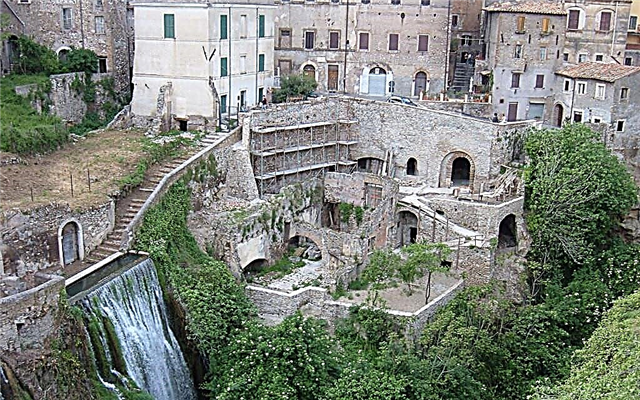
The villa of Emperor Hadrian, despite its decline, is still considered the most mysterious and interesting masterpiece of Italian architects. Built in the 2nd century, it, unfortunately, later became a source for building materials that were mined by local residents. Numerous excavations were carried out on its territory, revealing to the world many masterpieces of architecture and art.
Villa d'Este is considered to be the most impressive in Tivoli. Once upon a time, a Benedictine monastery was located in its place. The main advantage of the villa is the magnificent beauty and scale of the park, which was created thanks to Cardinal Ippolito d'Este. There is everything here: grandiose staircases, unique fountains, and antique statues. By the way, there are about 500 fountains here! This architectural masterpiece served as the inspiration for one of the most famous buildings in Paris - the colossal Versailles.
Orvieto

The last point we will look at today as a destination for a day trip from Rome is Orvieto. The train journey will take about an hour. If you believe the history, it was these regions that became the starting point in the construction of the Etruscan community. If you love history and everything mysterious, you should definitely visit this corner of Italy! Indeed, it was here, in the thickness of the hill on which the city is located, that an ancient cave city was discovered. Surprisingly, the authorities, for some reason, classified all information about the find and denied this fact for a long time. Today, excursions to the caves are held in strict order under the vigilant supervision of the guards.
There is also an overground attraction - a beautiful and somewhat unique cathedral of Saints Mary and Costanzo. By the way, the town was for a long time the residence of the Popes, thanks to whose patronage it owes such a unique architecture. And the famous white wine Orvieto Classico, famous all over the world, was “born” in Orvieto, which, without any doubt, are the pride of local winemakers and lovers of this “drink of the gods”.
Civita di Bagnoregio
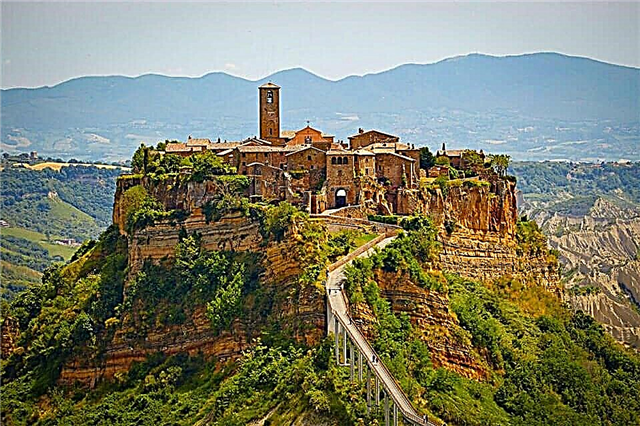
A two-hour drive away is a town nestled on a cliff top between valleys. At first, it seems that you have fallen into a different reality: how did stone buildings of the Middle Ages appear in the midst of untouched dense vegetation in the midst of nature? At the end of the 17th century, there was a strong earthquake here, so the inhabitants were forced to leave their homes.
Since then, the mini-town has been considered dead, but it looks not at all ominous and does not frighten tourists. The breed in these places is unstable, earthquakes of different strengths are regularly repeated, so no one wants to settle in a specific area. However, the abandoned castles have restaurants, cafes and small hotels. The center of the town is a cobbled square with a medieval church and bell tower.
For tourists, Civita di Bagnoregio is one of their favorite locations: here they get vivid photos against the background of Italian landscapes, atmospheric shots in the middle of narrow streets, moss-covered stone walls, entwined with weaving arches.
Assisi

Assisi is the spiritual center of Catholics. Saint Francis and his successor Saint Chiara were born here. The ancient city was founded about 3000 years ago, has experienced glorious times and difficult historical periods many times. This amazing place has multiplied its architectural heritage for many centuries. From anywhere in the city you can see the Great Fortress, erected in the 11th century.
The same age as the fortress - the Church of St. Damian was restored in the XIII century by Francis, and became a nunnery. The ancient temple of Minerva is another artifact, but dating back to the 1st century. The city center has been decorated with a three-stage fountain for over 400 years, guarded by ferocious marble lions. The heart of Assisi is the Basilica of St. Francis. It is located a kilometer from the center, on Hell's Hill. Until the 13th century, the accused were executed at this place.
Francis asked to rename the hill to "Paradise", but the new toponym did not take root here. Assisi has many churches, temples, several basilicas. This, as they say, "prayed" place has powerful energy. Tourists who have visited it admit that they feel uplifting and find spiritual harmony here.
Genzano di Roma

A small town near the picturesque Lake Nemi is located in the province of Rome, 30 km from the center. Here, the streets are not filled with tourist groups, there are no fashionable boutiques and high-profile attractions. But in this place you can feel the true Italian identity without embellishment. The main attraction of the city center is the long-lived fountain of San Sebastian, built in the 18th century and retaining its appearance unchanged to this day. One cannot ignore the castle dating back to the XIII century: to see such an ancient artifact in a small provincial town is a great success.
Genzano di Roma hosts colorful folk festivals and celebrations. During the flower festival "Infiorata" in the second half of May, the streets of the city are decorated with huge fragrant carpets, paintings, portraits and patterns of flowers, stretching along the main street 210 meters long and 9 meters wide. At the end of September, a gastronomic event is traditionally held here - a festival of bread, and the streets are filled with mouth-watering aromas of fresh pastries, cheese, sausages, wine, fruits and other dishes.
Nettuno

Less than an hour by train in the direction of the Tyrrhenian Sea - and you are in the resort of Nettuno. It is located just 60 km from the capital. Nettuno was founded in the 9th century by the Saracens, over the centuries it grew, strengthened and today the population of the resort is 50,000 people.
The city has many marinas; various regattas are periodically held here. And in the port, which tourists love to visit, up to 800 yachts can moor at the same time. Nettuno has equipped beaches, where you can comfortably stay on a one-day stay. They are usually crowded, so it is better to move away from the center and take a break from the bustling neighbors on a sun lounger.
In addition to yacht trips and beach recreation, while staying in a resort city, you can also get a cultural component of your vacation. Nettuno has several attractions that are definitely worth a visit. For example, the well-preserved fort of the early 16th century (also called the Sangalo fortress). You can feel like a guest of medieval Europe in the Borgo Medievale quarter, surrounded by an old wall. Villa Borghese is a 17th century building with a magnificent botanical garden on its territory.
Anzio

The resort close to Nettuno has a coastline of 12 km. There are soft sandy beaches with a gentle entrance, and swimming in the warm Tyrrhenian Sea is possible until mid-October. There is a yacht club and a port, so walking along the clear water surface of the sea in good weather is a must.
The historical part of the trip has not been canceled either, and besides, there is something to look at in this area. Walking along the coast, you can see many villas, among which Pine and Villa Nero stand out. There are also many atmospheric restaurants and cafes along the coast, where tourists can taste Italian cuisine with seafood.
Don't ignore the fish menu if, before your trip to Anzio, you thought pizza, pasta and tiramisu were the main masterpieces of Italian cuisine. Chances are you'll change your mind now. In the old part of Anzio, there are the ruins of the ancient Roman amphitheater and the Archaeological Park, fascinating history buffs.
Ponza

Why not add some exoticism to your trip and take a day off to the island? The journey to Ponza will take 1.5-2 hours. Tourists reach the coastal cities by rail, and swim to the island by boat or ferry. When approaching Ponza, you will immediately notice the colorful, toy-like houses nestled on the slopes of the mountains. Diving, the freshest seafood, boat trips, relaxed beach holidays, fishing - for all this tourists go here.
The visiting card of Ponza is underwater and above-water caves and grottoes. They look very impressive and mysterious, so do not miss the opportunity to sail by boat or boat around the island. Pilate's grottoes, carved into the coastal rock, are a landmark of the times of Ancient Rome.In Papa Bay, at a depth of 21 meters, there is a sunken American ship from the Second World War. The natural arch is a beautiful creation of nature: above the emerald waves, there are stone “gates”, under which you can sail by boat.
Rieti

The geographical center of Italy and the capital of the province of the same name will surprise guests: instead of liveliness and noise in the streets, you will find yourself in a cozy quiet town behind an ancient fortress wall. Rieti is located at the foot of the Sabinsky and Reatinsky mountains, so the panorama from the city streets is very picturesque. Many monuments from ancient times and the Middle Ages have been preserved here. Then - the favorite place of Catholic popes, whose residences were in Rieti.
The province is rich in rivers and lakes, one of which is Lago del Salto. An artificial reservoir in the middle of lush forest vegetation appeared in the middle of the last century. A tour of the underground part of Rieti is a great idea for the curious. The guides talk about the sights in Italian, but it is definitely worth taking a look at the high underground stone arches, balconies, narrow corridors, and wells in person.
Walking along the streets of Rieti, you will see many cultural sites and architectural structures that are several centuries old.
Sorrento

It takes two hours by bus to reach Sorrento, a place with a romantic name and famous for its mesmerizing landscapes. It spreads out on a rocky plateau approaching the sea itself. There is a citrus scent everywhere, because Sorrento is the city of lemons. This fruit is a symbol of the city, in addition, many people love "Limoncello" - a liqueur, the birthplace of which is precisely Sorrento. Not trying it here is a big mistake.
A key attraction is the Duomo Cathedral, built in the 11th century. During its existence, the building has undergone more than one reconstruction, but even now there is a medieval font, a bell tower, as well as the interior decoration of the temple. The best Neapolitan masters diligently decorated the cathedral with frescoes, stone and wood carvings, the interior of the cathedral.
A monument to Saint Antonio, patron saint of Sorrento, has been erected on the main square of Tasso. The Church of San Francesco, built in the 18th century, looks more like a botanical garden with rare plant species. The columns and galleries of the temple are entwined with climbing plants, various flowers flaunt in flowerpots, and spreading trees grow in the courtyard.
Positano

Another favorite location for tourists is Positano. The journey with changes takes 4 hours. But how can you ignore this Mediterranean paradise? This area was chosen by the ancient Roman noble gentlemen, when they erected luxurious buildings. And all because there is a mild climate, clean air and landscapes exciting the imagination.
The Trail of the Gods is one of the main attractions of Positano. In the middle of cliffs and rocks, a path meanders at an altitude of 300 meters. A walk along the path of the Gods reveals amazing panoramas of the blue sea, foamy waves at the white rocks, views of Sorrento and Capri. In the historic center of Positano, the 13th century Church of Santa Maria Assunta has been preserved.
Its round dome is decorated with majolica, while the walls and altar are decorated with carved wooden elements and gold decorations inside. The Li Galli Islands are an archipelago where, according to nautical legends, the sirens lived. On the island of Galla Lungo, there is a 14th century Aragonese tower and a monastery. At the beginning of the 20th century, the island was acquired by our compatriot, choreographer Leonid Myasin, who built a villa there and laid out many gardens.
Amalfi

The expressive landscapes of Amalfi are crystal clear sea water, turquoise waves at the foot of the cliffs, houses that seem to flow down to the sea along the edge of the cliff and flower gardens on each terrace and roof. The pearl of the coast of Italy is especially good from April to October, when the gentle breeze is barely felt, and the riot of vegetation is dizzy with its aromas and bright colors.
The visiting card of Amalfi is the Cathedral di Sant'Andrea, dating back to the 11th century. Its architectural highlight is that the church is decorated with various types of carvings, mosaics, frescoes in different styles. But at the same time they create a harmonious interior ensemble. Not far from the province, there is a natural treasury - an emerald sea grotto.
Depending on the weather, the color of the water changes from pale turquoise to rich sapphire. During a storm, the entrance to the cave is closed, so it is better to check the plans with the weather forecast. A visit to the Paper Museum and the National Museum of Amalfi will be remembered for interesting exhibits. You can also go on excursions in the vicinity of the province: see the mountainous Italian villages, the legendary city of Pompeii, take an auto tour along the Amalfi coast or wander through the castles of Naples.
Narni

At 90 km from the Eternal City, on the top of a hill, the Narni commune lives a quiet measured life. The city was able to preserve its medieval appearance and welcomes tourists with stone arches and paved squares. The fabulous country of Narnia, known to all dreamers, got its name from the name of this town. In Narni, the Augustus Bridge is preserved - the largest bridge of ancient Roman construction. Its height is 30 m. There are many architectural creations created at different times.
The construction of the Duomo di San Giovenale Cathedral began in the 11th century, and the work took almost 100 years. Palazzo of the XVI century, Romanesque church of the XII century, the city gate Porta della Fiera, also erected in the XVI century - the city is full of historically significant buildings that seem to keep the secrets of antiquity.
Palestrina

You can make your vacation varied by going to the municipality of Palestrina, 37 km. The ancient name of the settlement is Preneste. According to legend, the city was founded by the son of Odysseus Telegon. This ancient city witnessed the events that took place in the Roman Republic and the Empire, steadfastly survived the bloody medieval wars and absorbed cultural influences during the Renaissance.
The famous Nile antique mosaic (size 5.8 m by 4.3 m) is simply mesmerizing. It depicts scenes from the life of the Egyptians, but the most amazing thing is the presence of dinosaurs and other animals that became extinct in antiquity, as well as humanoid monsters. Considering the details of this mysterious creation, you can hardly tear yourself away from it.
The Barberini Palace houses exhibits from the National Archaeological Museum. And in the church of Santa Rosalia there is a statue of "Pieta", carved from a piece of rock by the great Michelangelo.
Nemi

The strawberry-strawberry capital of Italy is located by the lake of the same name, 40 minutes away. For 100 years, Nemi has been hosting the strawberry festival in early June. Dizzying aromas of berries fill the city, and Italians in historical national costumes lead a festive procession through the streets. Strawberries are a symbol of Nemi, so the souvenirs from here are themed: decorations in the form of ripe berries, stationery or home textiles with a corresponding print.
Lake Nemi is the heart of the area. In the midst of dense thickets of bushes and trees, a picturesque reservoir of volcanic origin spilled over. In shape, the lake resembles a woman's pocket mirror, so in the old days it was called "The Mirror of Diana", the patroness of animals and flora. The streets of Nemi are the epitome of Italian identity. The locals decorate the balconies and terraces of low-rise buildings with flowers; right in the middle of the street there are café tables where you can have a leisurely breakfast or lunch.
Ostia Antica

Go back in time without the help of a time machine? Easily. The archaeological complex is just 40 minutes away from the capital, and here you can see how the ancient buildings looked without the admixture of subsequent eras. In Ostia, the ancient Roman building technique is invariably preserved, proving that the Romans were the first to use concrete.
Among the attractions, a special place is occupied by a theater with a capacity of up to 4,000 spectators.It is still in excellent condition, considering that it was built 2,000 years ago. Remains of city institutions, intended for the life, everyday life and hygiene of the townspeople, have also been preserved. Insuls are apartment buildings that the Romans were forced to build due to the increase in population.
Public baths (thermae). It would seem a place with a specific purpose, but the Romans are incredibly cultured people, filling everything around with aesthetics. In Ostia, on the floor of one of the baths, there is a black and white mosaic depicting Neptune on a chariot. Latrines, fire brigades, laundries, columbarium tombs - these and other remnants of ancient infrastructure make up an open-air complex.
Caserta

Here is the largest palace in Europe, built in the 18th century - Reggiv di Caserta (178 km from Rome). Charles VII of Bourbon ordered the construction of such a large-scale structure that it surpassed the French Versailles in both size and beauty. The palace has 1200 rooms, 5 floors, a building 36 meters high, the length of the facade is 247 meters. The construction work lasted for a total of 93 years.
A huge park is laid out on the territory of 120 hectares, which is decorated with luxurious cascades of fountains, sculptures, exquisite vegetation and skillful landscape design. Part of the palace is occupied by the Opera Museum and the Territorial Museum, as well as a luxurious art gallery.
The town of Caserta itself is relatively young, and it "grew" around a suburban royal residence with houses of 3-4 floors. Although Caserta is given a "second role", there are pretty squares, monuments, the Duomo, the Diocesan Museum and the city theater. The streets are filled with people, but here it is not noisy and not crowded, on the contrary, you can feel the relaxed mood of both tourists and local residents, ready to start a friendly dialogue with the guests of the city.

